The Coming Revolution
in Writing and Reading
Preliminary Script
Chapter II, The Static Mudoc Specification Panel
Micromovie sequence:
1.
As you saw in Chapter I, when reading mudocs
(publications with text set in interactive movable type)
the reader will have the choice of having
the text displayed in the linear typography
or in any of five mu typographies.
In this chapter you will see how
interactive text is made aware
of the reader's needs and desires.
2.
Publishers of mudoc publications
will provide two sets of specifications
with each publication –
a set of static mudoc specifications
and a set of muvie specifications.
In this chapter you will see
how the static specifications
are assigned by the publisher
and how the reader can change
any of those specifications
any time he or she wishes to do so.
The static mudoc specification panel that follows
shows the kind of choices that each reader will have
when having interactive text displays
presented to him or her.
3.
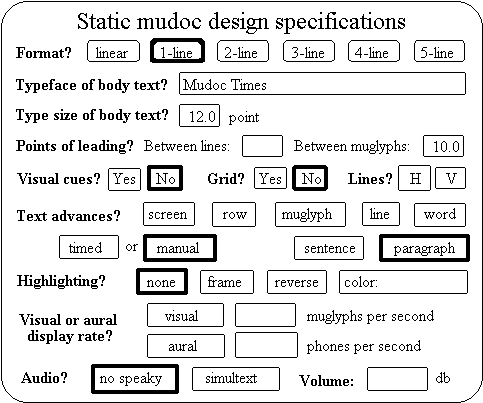
4.
The first option shown in the panel is "Format?"
The following paragraph shows the kind of changes
that result from changing this specification
from a linear format to a one-line mu format
– to a two-line mu format
– to a three-line mu format
– to a four-line mu format
– and to a five-line mu format.
5.
This is a paragraph presented six ways. The first is the usual way
– that is, as lines of print, a method of presenting text that makes
reading unnecessarily difficult and inefficient. The other five,
the five mu formats, present text in ways that make it easier
to see and understand. The one-line mu format is similar to the
conventional linear typography, except that the words are grouped
so the reader can make regular eye movements and can consume
more than one word with each fixation. The two-line format enables
readers to see more words per fixation and to start using their
vertical spans of apprehension. The three-, four-, and five-line
mu formats enable readers to consume larger chunks of text per
fixation and to make more effective use of their vertical visual spans.
6. Text set in one-line mu format.
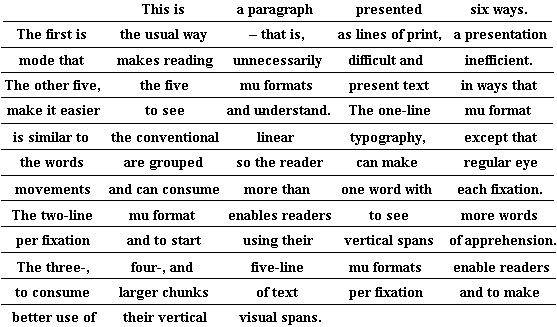
7. ...two-line mu format.
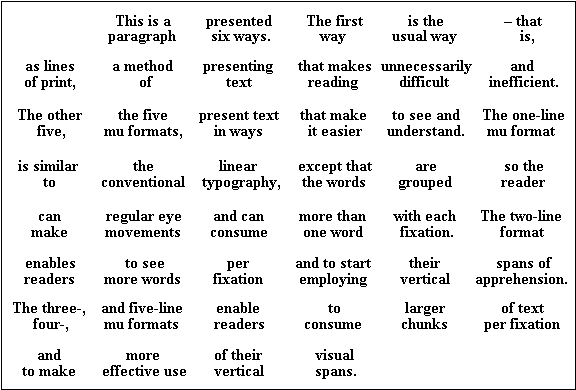
8. Text set in three-line mu format.
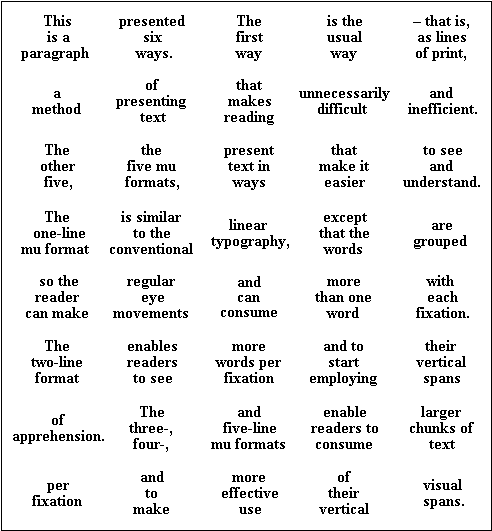
9. ... four-line mu format.
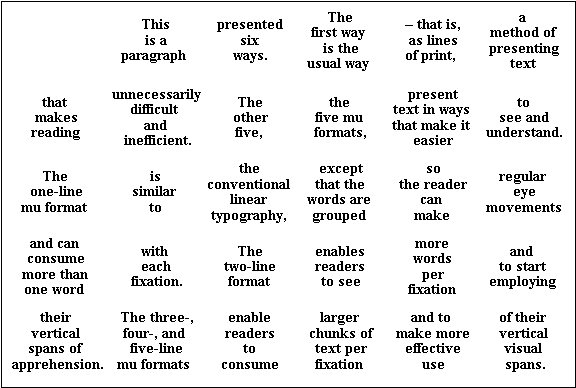
10. Text set in a five-line mu format
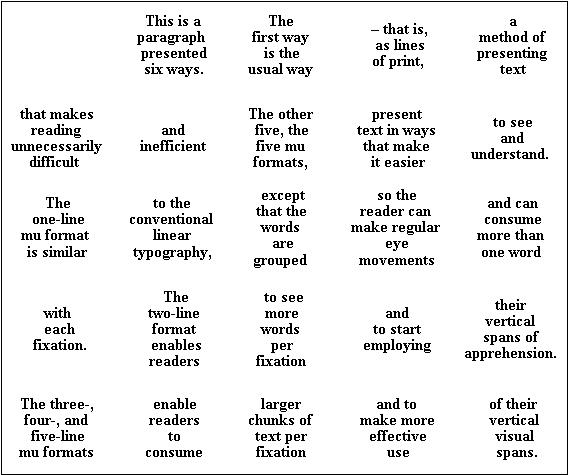
11.
The next option for the reader is typeface
– the typeface to be used in the text display.
Readers can choose from the various
typefaces that have been developed for use
with the mudoc software.
A PARAGRAPH IS THEN REPEATEDLY SHOWN WITH SEVERAL DIFFERENT TYPEFACES, TYPEFACES THAT ALL HAVE PROPORTIONAL SPACING AND THE SAME SPACE REQUIREMENTS.
12.
The next option for the reader is type size
– the size of type that the reader wishes to be
used in the text that is to be displayed.
13.
THEN THE FOLLOWING SENTENCE, SET IN A 3-LINE MU FORMAT, IS SEQUENTIALLY ENLARGED FROM 8-POINT TO 300-POINT TYPE (AT WHICH POINT ONLY THE WORD "WHEN" FILLS THE SCREEN):
When reading text that is set in
interactive movable type readers can vary
the type size from barely readable letters
to letters that fill the screen.
14.
The next option for the reader concerns visual enhancements
- the use of grids or lines or cues to facilitate reading.
Mutext readers can have the text presented
with supplemental visual data
to help them navigate through the text.
They can have mutext presented as plain text
- or as griddled text or line-divided text or cued text,
as shown in the examples that follow.
15.

16.
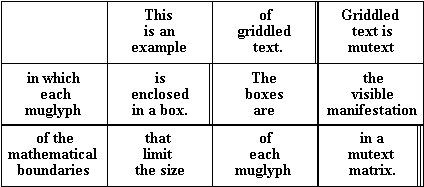
17.
The horizontal and vertical lines in the mutext grid
can be used as dividing lines
between the rows or the columns
of muglyphs in a mutext set.
The example that follows shows horizontal lines
dividing the rows of muglyphs in an English mutext set.
With the languages that use vertical formats,
the vertical lines of the mutext grid
can be used to divide the columns
of muglyphs in the text.
18.
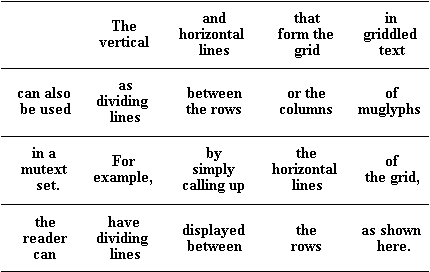
19.
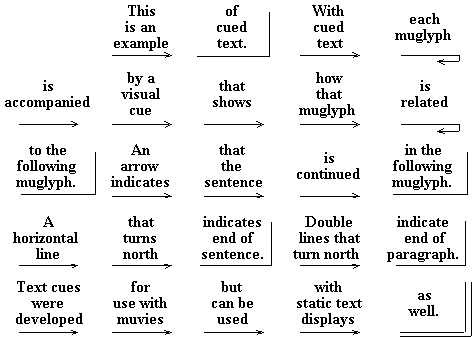
20.
Chapter III, "For the Eyes, the Ears, or Both,"
which follows, will discuss additional options
that readers will have when reading text
set in interactive movable type.
You will be introduced to a-v-simultext and
to the various ways readers can have
interactive text advanced.
On to Chapter III
Back to The Coming Revolution Playbill
©1999, The Mudoc Corporation (rev. 10/12/00)
If you would like to reprint or reproduce this document electronically or on paper, submit your request to The Mudoc Corporation by FAX, email, or letter describing how it will be used, how it will be reproduced and distributed, and the audience for whom it is intended.










